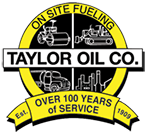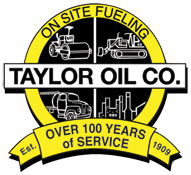Onsite Fuel Tanks Can Simplify Fuel Management: Things to Consider – There are many factors to consider when it comes to on-site fuel storage, from the benefits of fuel monitoring to cleaning and maintenance costs. And don’t forget about tank transportation, theft prevention and much more.
As the source of 98 percent of energy consumed at the average jobsite, diesel is a universal expense for any contractor. As the construction industry continues to grow and change, businesses are forced to find newer, more efficient ways to manage their assets, including fuel storage.
Thankfully, on-site tanks are able to simplify fuel management. Check out these things to think about when it comes to a fuel tank purchase on location.
Mobility and Capacity
The size of the tank directly correlates with how stationary or mobile it will be. Some tanks hold less than 150 gallons, while other containers can hold up to 25,000 gallons. It’s important to start off knowing how much fuel you are using now and how mobile your fuel supply has to be.
Not surprisingly, smaller tanks are easier to transport, usually DOT-approved trailer-mounted tanks holding between 200 and 1,000 gallons. These are well-suited to delivering fuel to remote sites. When considering buying a trailer-mounted tank, think about buying a sturdier trailer that can withstand the forces of the moving liquid while at the same time navigating rough, unpaved roads at construction sites.
A lower center of gravity, for instance, makes the tank less susceptible to tipping during transportation. If your typical job requires a large tank of 1,000 gallons or more, you will have to think about how you will move it around a jobsite. Round tanks will need a crane or loader to move, for example.
Compliance
Ground contamination is a big concern for construction managers regarding their on-site fuel tanks. All tanks have to meet basic environmental standards, but in the case of round tanks, you also have to pay to own and clean secondary containment pans.
Diesel exhaust restrictions are another big environmental concern. To offset the burden of Tier 4 compliance, many tanks are being made with onboard DEF storage. As a result, when you incorporate both diesel and DEF storage into a single tank, you are doing your part to reduce downtime and simplify compliance.
Site-Specific Factors
Every construction site is different. Therefore, you must evaluate which features will increase value for any given operation. Tanks featuring many in and out ports, for example, will allow the tank to act as an auxiliary fuel supply while retaining the ability to fuel trucks and other equipment.
If you frequently have jobs at remote locations, remote fuel tracking allows you to monitor and manage supplies from anywhere. And owning tanks with secure access to fittings and dispensing equipment goes a long way toward preventing unauthorized access and thus discouraging fuel theft.
One more location-specific consideration concerns the tank’s power supply. For mobile tanks at remote sites, you can add options such as solar panels and battery power storage. Or, if you have space limitations, choose tanks that are stackable to free up space.
Contact Taylor Oil
To learn more about how onsite fuel tanks can simplify fuel management, contact Taylor Oil today.


